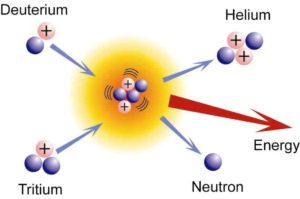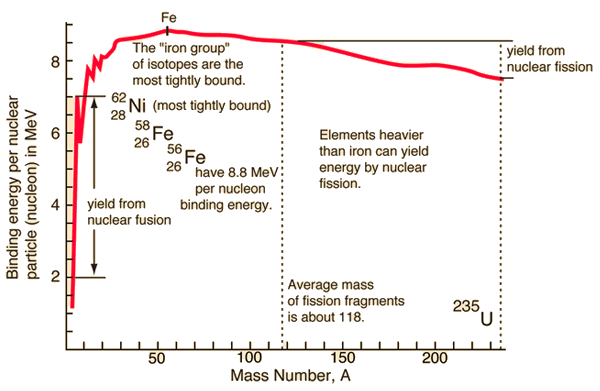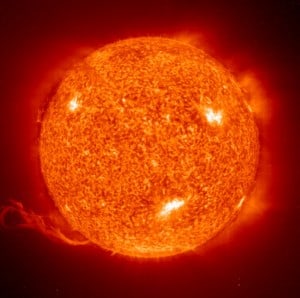
Source: chemwiki.ucdavis.edu
In nuclear physics, nuclear fusion is a nuclear reaction in which two or more atomic nuclei collide at a very high energy and fuse together into a new nucleus, e.g. helium. If light nuclei are forced together, they will fuse with a yield of energy because the mass of the combination will be less than the sum of the masses of the individual nuclei. If the combined nuclear mass is less than that of iron at the peak of the binding energy curve, then the nuclear particles will be more tightly bound than they were in the lighter nuclei, and that decrease in mass comes off in the form of energy according to the Albert Einstein relationship. For elements like the uranium and thorium, fission will yield energy. Fusion reactions have an energy density many times greater than nuclear fission and fusion reactions are themselves millions of times more energetic than chemical reactions.
The fusion power offers the opportunity of an almost inexhaustible source of energy for future, but it the fusion technology presents a real scientific and

Source: hyperphysics.phy-astr.gsu.edu
engineering challenges. For potential nuclear energy sources for humankind, the deuterium-tritium fusion reaction controlled by a magnetic confinement seems the most likely way. But nowadays also this way contains several insurmountable engineering challenges.
Fusion powers the Sun
The Sun is a hot star. Really hot star. But all of the heat and light coming from the Sun comes from the fusion reactions happening inside the core of the Sun. Inside the Sun, the pressure is million of times more than the surface of the Earth, and the temperature reaches more than 15 million Kelvin. Massive gravitational forces create the these conditions for nuclear fusion. On Earth, it is impossible to achieve such conditions.

Source: hyperphysics.phy-astr.gsu.edu
The Sun burns hydrogen atoms, which fuse together to form helium nuclei, and a small amount of matter is converted into energy. In its core, the Sun consumes approximately 620 million metric tons of hydrogen each second. Hydrogen, heated to very high temperatures changes its state from a gaseous state to a plasma state. Normally, fusion is not possible because the strongly repulsive electrostatic forces between the positively charged nuclei prevent them from getting close enough together to collide and for fusion to occur. The mechanism, how to overcome the coulomb barrier is by the temperature and by the pressure. At close distances the attractive nuclear force allows the nuclei to fuse together.
Deuterium-Tritium Fusion
The fusion reaction of deuterium and tritium is particularly interesting because of its potential of providing energy for the future.
3T (d, n) 4He
The reaction yields ~17 MeV of energy per reaction but requires a enormous temperature of approximately 40 million Kelvins to overcome the coulomb barrier by the attractive nuclear force, which is stronger at close distances. The deuterium fuel is abundant, but tritium must be either bred from lithium or gotten in the operation of the deuterium cycle.
We hope, this article, Nuclear Fusion, helps you. If so, give us a like in the sidebar. Main purpose of this website is to help the public to learn some interesting and important information about radiation and dosimeters.